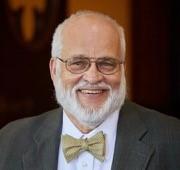Carl Grant is Associate Dean/Chief Technology Officer at University of Oklahoma Libraries
It’s always one of my goals in my role, to watch emerging technologies and to try and identify those that, per the model Geoffrey Moore established, will “cross the chasm” (https://en.wikipedia.org/wiki/Crossing_the_Chasm ) and have an impact in research and pedagogy. This is always a risky move. You can be totally wrong, spend a fair amount of money and have little to show at the end. Or you can be right and be a leader in helping deploy that technology in addition to being well positioned to capture the historical record surrounding it.
Too many librarians are extremely risk adverse, due to typically working in a publicly funded institution. I understand why that makes so many hesitant to take a risky approach. But I wonder if they’re weighing the right risk? In my mind, I want the library to be seen as a place to come and try out new technology, a place where people can get help evaluating the pluses and minuses of that technology and help in using it to pursue their pedagogical and research goals. I want them to see the library as a place of engagement, exploration, innovation and synthesis. We can’t do sitting on the sidelines. Especially, in a world where technology is advancing as rapidly as it is today. Doing so is to risk being seen as obsolete, a problem I hear all too many colleagues moaning about being the perception of their library on their campuses.
As one example, at our library, we have evaluated virtual and augmented reality and see them as having crossed-the-chasm. Since January of 2016, we have been pushing into new frontiers with this technology and are seeing as a result, the library becoming a central hub in the use of the technology in research, teaching and exhibitions across the campus. We are seen as campus leaders, advisors and collaborators. We’re also working in the preservation and curation of the models created and used and I assure you it’s hard and sometimes excruciatingly difficult work. But the payoffs have been large both on our campus and literally around the globe. VR manufacturers are providing us with equipment at no charge in order to promote “work they’re not seeing done anywhere else”. Grant money and awards are flowing our way. Our brand has reached new heights. The door count in our library is soaring. No one is questioning the role of our library in the future of the academy. While that isn’t due solely to the work discussed here, it is a essential part and an overall example of risk well managed.
Digital preservation is one of risk. But more librarians need to learn how to weigh and manage risk well. It means taking risks and a long view. Yes, it can be costlier. But as we’re seeing, leaders attract money, talent and other resources. Not taking those risks is a self-feeding downward spiral. Where is the real risk?
